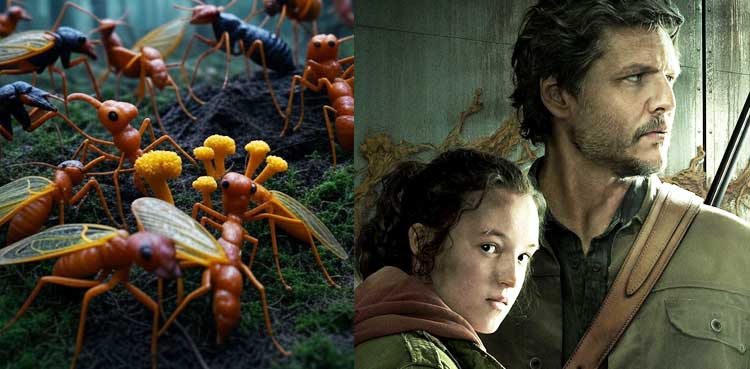The eerie world of Cordyceps and Ophiocordyceps, dubbed “zombie fungi,” has captivated audiences through HBO’s The Last of Us. These parasitic fungi, which inspired the show’s zombifying pandemic, thrive in nature by taking over insect hosts, a phenomenon both fascinating and terrifying.
The Last of US- All Stories
Real-World Zombification
The real-life inspiration, Ophiocordyceps unilateralis (formerly Cordyceps unilateralis), turns ants into zombie-like puppets. This fungus manipulates its host’s behavior—causing staggering, hyperactivity, and a “death grip” on vegetation—before erupting from the ant’s head to spread spores, as noted by mycologist Matt Kasson (Discover Wildlife). Unlike the show’s rapid transformations, real-world zombification is a slow process, taking time to establish control, according to science journalist Mindy Weisberger in Rise of the Zombie Bugs (Popular Science). Fortunately, infected ants don’t return to violence post-mortem; the fungus uses their bodies as a resource until its life cycle completes.
Fungal Threats to Humans
While humans are largely safe from zombifying fungi, other species pose real risks. Aspergillus fumigatus, Candida auris, and Cryptococcus neoformans—found in hospitals and bird droppings—can be lethal, with the latter boasting a 40-60% mortality rate, per insect pathologist Oliver Keyhani (Popular Science). Climate change and fungicide overuse are expanding threats like Valley Fever (Coccidioides), driving opportunistic infections resistant to treatment, highlighting a growing public health concern.
Cultural Impact and Scientific Insight
The rise of The Last of Us has boosted interest in fungi, from biomaterials to pharmaceuticals, with zombie fungi serving as powerful cultural messengers. Yet, this popularity has sparked concern among scientists like Brian Lovett from Cornell University, who notes that fictional flourishes diverge from real fungal wonders being studied as living pesticides (Popular Science). Mythological ties to fairies and dryads further underscore fungi’s enigmatic allure, with less than 10% of the fungal kingdom explored by mycologists.
Explore your backyard for summited ants or flies bursting with fungal life—nature’s own horror story awaits, no streaming service required.
